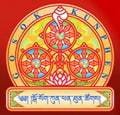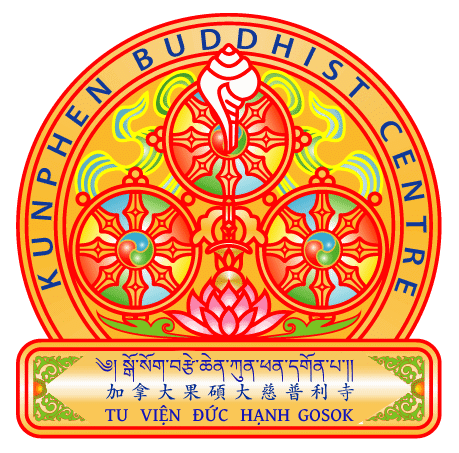Lakshmingkara, the “Crazy Princess”, was one of the 84 Indian Vajrayana Mahasiddhas….
拉倩噶拉,”瘋公主”,是古印度金剛乘八十四大成就者之一….
拉倩噶拉為成就者印札菩提國王之妹,自幼年開始,拉倩噶拉就已享盡貴族所擁有的榮華富貴,且親近許多善知識,通曉許多密續的教法。後來,哥哥印札菩提把她許配給蘭卡國王嘉稜扎的兒子。
當公主被迎娶抵達蘭卡鋪拉之時,因為星象不吉未能馬上被迎娶入宮,因而暫留鎮上。拉倩噶拉發現所遇見的人都不是佛教徒,又發現王子打獵殺生,因而憂思過度昏厥。甦醒之後裝瘋禪修,七年之後,公主得到了成就,並傳法給國王的一個清潔工。
有一天,嘉稜札國王去打獵迷了路,來到拉倩噶拉所居住的山洞。驚見四方天女向拉倩噶拉頂禮致敬和獻供。國王回宮後又復歸向拉倩噶拉求法,但公主表示國王不是她有緣的弟子,要他去找清潔工,爾後,清潔工授與國王令心識成熟的灌頂,並且教授金剛亥母生起與圓滿二次第的口訣。最後,公主和清潔工在蘭卡鋪拉示現了許多奇蹟之後,以肉身飛行到空行淨土。(維基百科)
In the Dakini realm of Oddiyana, King Indrabhuti ruled Sambhola. To cement the friendship with his neighboring kingdom, Lankapuri which was ruled by King Jalendra; Indrabhuti betrothed his sister Laksminkara at age 7 to the son of Jalendra. Laksminkara was an extraordinary being, blessed with the qualities of the elect. Time passed and at age 16, she was escorted to the Kingdom of Lankapuri. After her sheltered upbringing, she was terrified of entering the mundane world, when all she wished to do was continue with her practice.
Due to the delay of her departure, the royal party arrived later than expected. They were denied entry to the palace because, according to them, it was an inauspicious day. So the princess and her retinue had to wait until the following day. She grew uneasy of her new environment and fell into depression. And when she languished outside the palace observing the life of the city, her depression deepened. It was quite clear that the people of the city had never heard the message of the Buddha.
When she finally entered the palace, she locked herself in her chamber and refused to see anyone for 10 days. Determined that her only escape from this life was to pretend to be insane, she tore the clothes from her body and smeared oil on her body until she looked like a wild woman. But all the while in her heart she was concentrating on her sadhanas. The prince despaired when he saw her. All the royal physicians sent to attend her could not cure the princess. She continued the act, until one day, she was able to escape from the palace. She made her way to a cremation ground where she lived as a yogini for 7 years. A sweeper of the king’s latrines served her faithfully during this time. When she gained realizations she gave him initiation. He quickly attained Buddhahood without anyone knowing of this achievement except his preceptress.
One day, King Jalendra got separated from his hunting party. While he circled aimlessly in the forest, he saw Laksminkara, seated upon a jeweled throne, her body glowing with golden radiance. Faith blossomed in the king’s heart, and he remained there all night watching the event in the magical cave.
The next day, the hunting party found King Jalendra. They went back to the city. The king could not keep himself from returning to the cave time after time. Finally, he entered the cave and prostrated himself before the yogini. Initially, she was quite doubtful of his intentions, but the king spoke so movingly of his belief in her as a Buddha. He begged so humbly for instructions. She then told him he could not be her disciple. His guru should be one of his own sweepers. He was told to observe closely to find out who his guru should be.
The King did as Laksminkara advised. Not long after that he discovered the identity of the sweeper-guru and invited him to his throne room. He seated his guru on the throne and prostrated himself before his guru, and requested instruction. The sweeper-yogin gave him initiation by the transfer of the guru’s grace and then taught the king the Generation and Completion stages of the sadhanas of Vajra Varahi.
For many years thereafter, Laksminkara and the sweeper performed many miracles before they both ascended into the Paradise of the Dakinis.
Mahasiddha Kumbharipa ||
大成就者 岡巴利巴
84 Mahasiddhas ||
84 大成就者
Mahasiddha Lilapa ||
大成就者 黎拉巴



